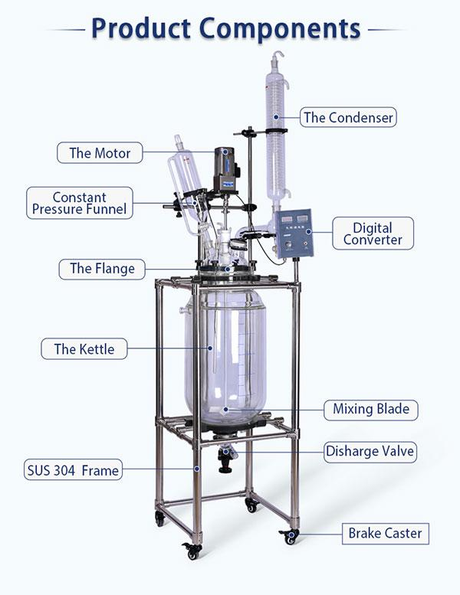There are several types of glass reactors commonly used in laboratory and industrial settings. There are most common types as below :
 Glass Reactor
Glass Reactor
Jacketed Glass Reactor: This type of reactor has a jacket surrounding the glass vessel to allow for heating or cooling of the contents inside the reactor.
Single-layer Glass Reactor: This type of reactor has a single-layer glass vessel and is used for mixing, stirring, and reaction processes.
Double-layer Glass Reactor: This type of 5l jacketed glass reactor has two layers of glass, with the space between the two layers serving as a cooling or heating chamber.
Triple-layer Glass Reactor: This type of reactor has three layers of glass, with the outermost layer acting as a jacket for heating or cooling, and the inner layers serving as the reaction vessel.
Vacuum Glass Reactor: This type of reactor has a vacuum-sealed vessel, which allows for reactions to occur under reduced pressure.
Photocatalytic Glass Reactor: This type of reactor is specifically designed for photocatalytic reactions and has a specialized glass vessel that allows for the introduction of light to the reaction system.
High-Pressure Glass Reactor: This type of reactor is designed for high-pressure reactions and has a reinforced glass vessel that can withstand high pressures.
Mini Glass Reactor: This type of reactor is a small-scale version of a larger glass reactor and is used for research and development purposes.
Fractional Distillation Glass Reactor: This type of reactor is used for distillation and separation processes and has a specialized glass vessel with a distillation column for separating different components of a mixture.
Fixed Bed Glass Reactor: This type of reactor is designed for heterogeneous catalytic reactions and has a stationary bed of catalyst particles inside the glass vessel.
Fluidized Bed Glass Reactor: This type of reactor is also used for heterogeneous catalytic reactions and has a bed of catalyst particles that are fluidized by the reactant gases flowing through the reactor.
CSTR Glass Reactor: This type of reactor is a continuous stirred-tank reactor and is used for continuous flow reactions.
The composition of the jacketed glass reactor Jakceted glass reactor
Double-layer glass reactor is the best-selling glass reactor equipment,what parts does it consist of?
A 5l jacketed glass reactor typically consists of a glass vessel or reactor body with an outer jacket made of stainless steel or some other type of metal.
The jacket is designed to allow heating or cooling fluid to circulate around the reactor vessel, which can be used to control the temperature of the contents inside the vessel.
Inside the glass reactor vessel, there can be different components, depending on the specific application.
Typically, there is a stirrer or agitator, which can be used to mix the contents of the reactor. The stirrer is usually driven by a motor, and its speed can be controlled to optimize mixing efficiency.
Other components that may be present in the glass reactor can include temperature sensors, pressure sensors, sampling ports, and ports for adding reactants or other materials to the reactor.
The specific configuration of the glass reactor will depend on the intended use and the requirements of the experiment or process being performed.
These are just a few examples of the types of glass reactors available, and there are many other specialized designs and configurations used for specific applications.
